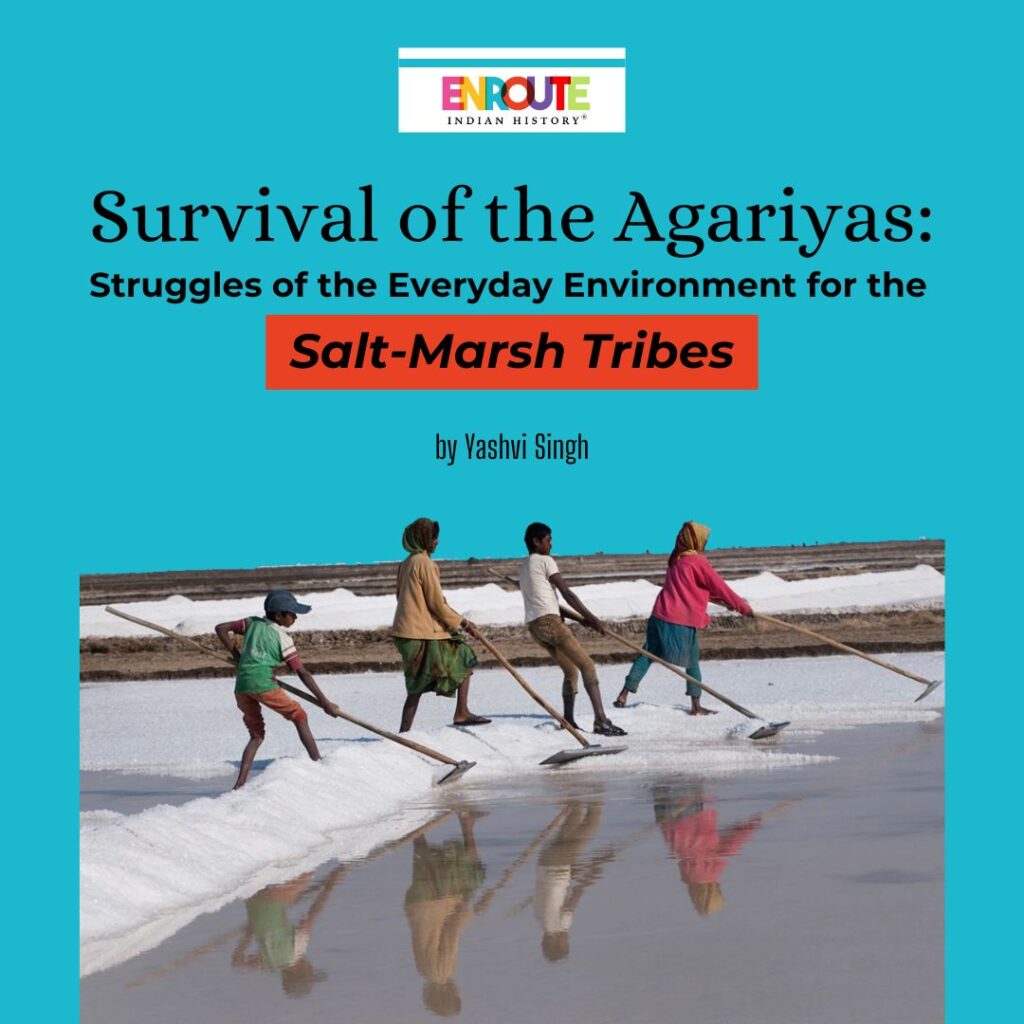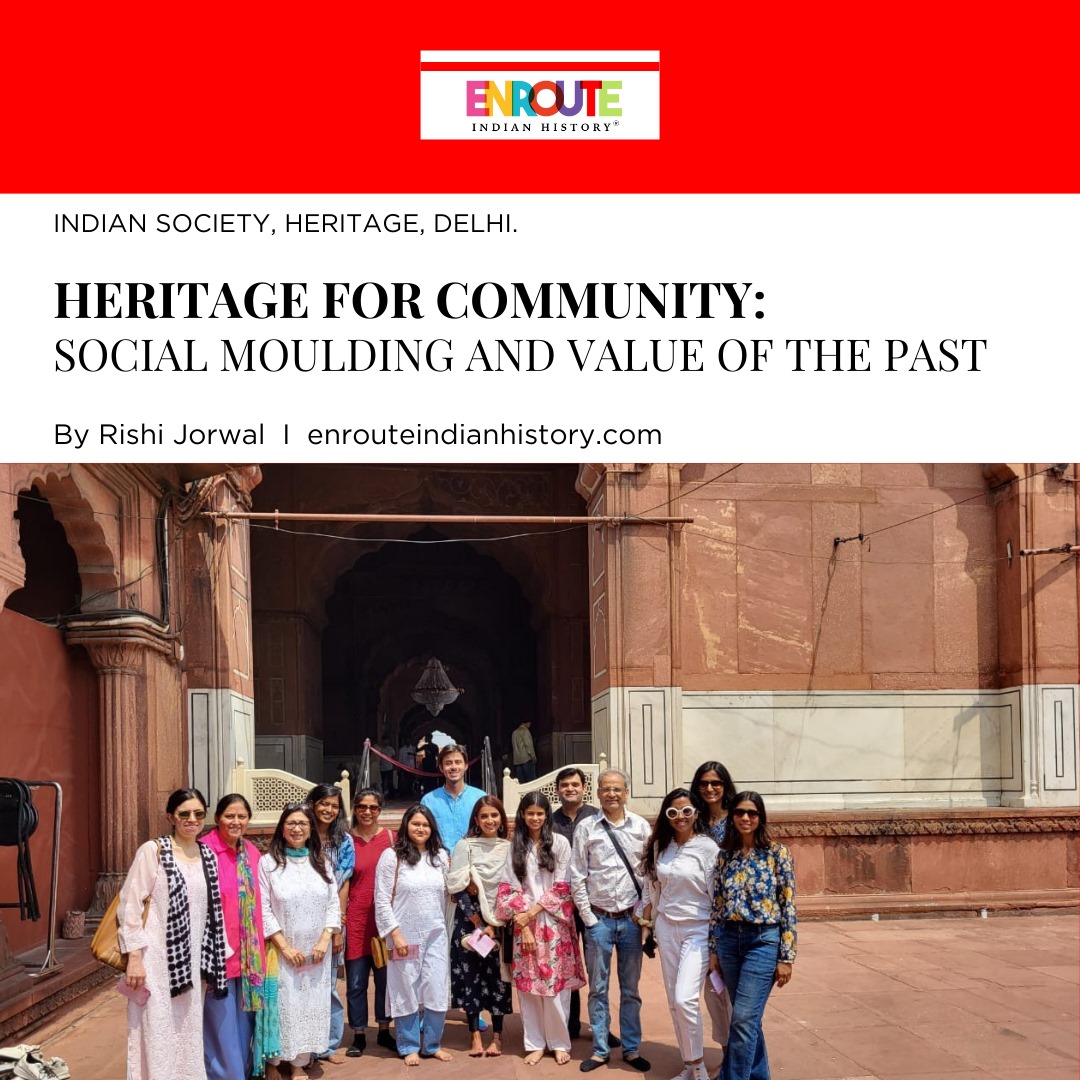Survival of the Agariyas Struggles of the Everyday Environment for the Salt-Marsh Tribes
- enrouteI
- June 27, 2023

‘Agariya’ comes from the Gujarati word ‘Agar’ which means salt farms. The Agariya are South Asian people of native origin who have traditionally been tasked with the production of salt in the Little Rann of Kutchh through the sub-soil brine which is ideal for this purpose as it is 20 times saltier than seawater. They have been known to do this for over 600 years now in the same environment and back-breaking work as ever before.
Agariyas reside in their native place all monsoon and migrate to the salt for the rest of the year, i.e., 8 months. Due to the isolation of the landscape, Agariya families have to carry all their provisions that they will need for the next 8 months along with them including the clothes they will wear, the food they will eat or the tools they will use to harvest salt. As they move further from civilization every year, they are left entirely to the whims of the environment that they reside in and must perforce learn to deal with extreme conditions like the 40 Celsius weather and the blinding effect of the white shining salt in the heat.
However, they aren’t simply the victims of their environment and rather are skilled at knowing how to exploit it for their own benefit, for example, their ingenious way of bringing the groundwater to the surface and producing salt from it. Centuries ago, the Rann of Kutchh used to be part of the sea bed but due to an earthquake, it is now an arid sprawling desert which is around 10 kilometres away from the Arabian Sea. The groundwater of this region is incredibly saline and is brought to the surface through pumps and dried out in massive salt pans. The pumped-out brine is then poured into square-shaped salt pans, where the evaporation process naturally produces treasured white salt crystals. It takes a lot of effort to get these pans ready for this operation. To prevent the saltwater from seeping back into the soil, the farmers use their bare feet to pound and level the ground. Salt crystals start to form when some dry twigs are added.
As is evident, the Agariyas live in an uneasy comfort with their environment which they have to some extent adapted to suit themselves but even then, it must be remembered, that the environment reigns supreme. During the cremation of the Agariya people, their feet don’t burn completely on the pyre as they are excessively concentrated with salt due to working in highly acidic saline conditions all those years. Exposure to salt also causes skin diseases and doesn’t allow other wounds to heal.
To top it all off, the government declared the land they work on as wildlife conservation land, effectively turning the land they have worked on for years into an illegal practice. What is more, current estimates state that the groundwater in the region is at an all-time low and it is possible that in 20 years times, the wells will run dry and it will no longer be possible to harvest salt from there. Recognising this need, the government has tried to intervene by providing rubber boots for the workers to protect their feet and solar panels to power the pumping of groundwater. There is also an informal understanding between the government and salt farmers and the government allows them to farm salt on the peripheries of their wildlife-conserved land. Much more however needs to be done to aid the healthy survival of the Agariyas in their environment, starting with encouragement for them to unionize which will assist them to negotiate rates with the salt merchants and thus improve the quality of their life.
Government schemes for the betterment are also a need as due to their moving nature, they can’t be helped by any conventional welfare schemes which work at a village level. Education for the Agariya children and healthcare aid from the government is a requirement to ensure the betterment of this formerly ‘criminal’ tribe and their safe involvement in the economy of their region.
Bibliography-
Andharia, Prateek Benny. “Salt pan workers in Gujarat: examining the need for a special legislation.” GNLU JL Dev. & Pol. 3 (2013): 88.
Sivanesan, Haema. “Jonathan Jones: untitled (salt).” Art Monthly Australia 256 (2012): 30-33.
Chandra, Yamini, and Prakash Sao. “Case study on salt farmers: A sustainable livelihood approach.” Indian Journal of Social Work 81.1 (2020): 119-34.
Chandra, Yamini, and Prakash Sao. “Case study on salt farmers: A sustainable livelihood approach.” Indian Journal of Social Work 81.1 (2020): 119-34.
Ramanathan, V., et al. “DEVELOPMENT TEAM.”
- April 18, 2024
- 5 Min Read
- April 18, 2024
- 7 Min Read


























